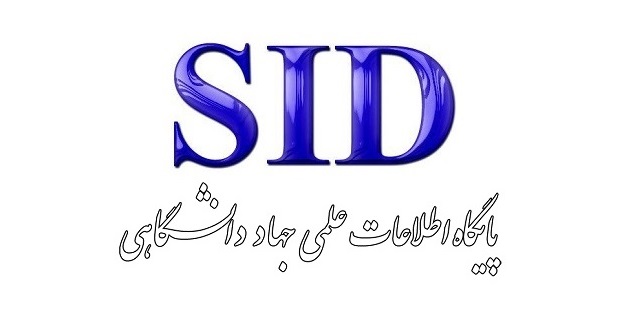Assessing the Alignment Between Virtual and Real Identity in Iran: Evaluating the Challenges
Keywords:
virtual identity, real identity, identity contradiction, cyberspace, challengesAbstract
The emergence of cyberspace as an inseparable part of daily life has posed a novel challenge to individuals’ identities. The contradiction between virtual and real identity is one of the complex phenomena of the digital age, bringing extensive individual, social, and cultural consequences. This study aims to investigate this challenge and propose strategies for its management. The research adopts a meta-synthesis and comparative analysis approach to examine related studies conducted between 2010 and 2024. The sources include peer-reviewed academic articles, international regulations, and the experiences of leading countries in virtual identity management. The theoretical framework is grounded in the theories of Giddens, Tajfel, and Castells. The findings indicate that anonymity, flexibility, and multiplicity in virtual environments lead to the emergence of contradictions between real and virtual identities. These contradictions result in psychological consequences such as anxiety and reduced self-confidence, social consequences such as diminished public trust and social cohesion, and cultural consequences such as the weakening of national identity and the deepening of generational gaps. Based on comparative analysis, the experiences of Estonia, the European Union, and China reveal that integrating advanced technologies (such as blockchain and artificial intelligence), enacting comprehensive regulations like the GDPR, and enhancing public education can facilitate better management of this challenge. In the Iranian context, the development of digital identification systems, the establishment of comprehensive privacy laws, and the promotion of indigenous cultural content are recommended. Managing identity contradictions requires a multidimensional and integrative approach that encompasses technology, policymaking, and cultural education. These strategies can help mitigate the adverse effects of cyberspace on users' individual and social identities.
Downloads
References
Alharbi, A., Dong, H., Yi, X., & Khalil, I. (2021). Social Media Identity Deception Detection: A Survey. Acm Computing Surveys, 54(3), 1-35. https://doi.org/10.1145/3446372
Binns, R. (2018). Artificial Intelligence and Privacy. Journal of Ethical Technology, 109-115.
Castells, M. (2001). The Rise of the Network Society Translated by Aliqian and Khakbaz. Tarh-e-No Publishing. https://books.google.com/books/about/The_Rise_of_The_Network_Society.html?id=hngg4aFtJVcC
Castells, M. (2010). The Power of Identity. Wiley-Blackwell. https://doi.org/10.1002/9781444318234
Dobbs, S. (2018). Connected: Social Media Use and Quality Family Time. California State University. https://scholarworks.calstate.edu/concern/theses/tx31qm79n
Dworkin, J., Rudi, J. H., & Hessel, H. (2018). The state of family research and social media. Journal of Family Theory & Review, 10(4), 796-813. https://doi.org/10.1111/jftr.12295
European Commission. (2018). General Data Protection Regulation (GDPR). European Union. https://gdpr-info.eu/
Giddens, A. (1991). Modernity and Self-Identity: Self and Society in the Late Modern Age. Polity Press. https://books.google.com/books?id=Jujn_YrD6DsC&source=gbs_navlinks_s
Giddens, A. (2005). The Consequences of Modernity Translated by Mohsen Salasi. Nashr Markaz. https://books.google.com/books/about/The_Consequences_of_Modernity.html?id=C46N9wtBI0gC
Giddens, A. (2007). Sociology Translated by Hassan Chavoshian. Ney Publishing. https://books.google.com/books/about/Sociology.html?id=vKifQgAACAAJ
Hall, S. (1987). Minimal Selves In Identity: The Real Me (ICA Document 6). Institute for Contemporary Arts.
Held, D., McGrew, A., Goldblatt, D., & Perraton, J. (2002). Globalization and Global Transformations Translated by Morad Ali Sedoughi. Center for Strategic Research of the Presidential Office. https://books.google.com/books/about/Global_Transformations.html?id=7Et0QgAACAAJ
Jenkins, R. (2004). Social Identity. Routledge. https://doi.org/10.4324/9780203463352
Katz, J. E., & Rice, R. E. (2002). Social Consequences of Internet Use: Access, Involvement, and Interaction. MIT Press. https://doi.org/10.7551/mitpress/6292.001.0001
Khelghati, M. (2008). Crises of Virtual Identities in the Anonymity of Chat Rooms. Crisis Management Course, Faculty of Social Sciences, University of Tehran,
Memar, S., Adlipour, S., & Khaksar, F. (2012). Virtual Social Networks and Identity Crisis (With Emphasis on Iran's Identity Crisis). Social Studies and Research in Iran, 1(4), 155-176. https://jisr.ut.ac.ir/article_36574.html?lang=en
Mousavinejad, M., Zarean, M., & Kaboli, M. (2021). Modeling Internet Addiction Based on Identity Styles and Academic Performance: The Mediating Role of Depression. Social Psychology Research, 11(44), 73-92. https://www.socialpsychology.ir/article_145803.html?lang=en
Pempek, T., Yermolayeva, Y. A., & Calvert, S. L. (2009). College students' social networking experiences on Facebook. Journal of Applied Developmental Psychology, 30, 227-238. https://doi.org/10.1016/j.appdev.2008.12.010
Praprotnik, T. (2004). How to Understand Identity in Anonymous Communication? www.hsd.hr/revija/pdf/1-2-2004/01-praprotnik.pdf
Rafi, H., & Abbaszadeh Marzbali, M. (2019). Challenges of Globalization and Virtual Space for Iranian National Identity. Strategic Studies Quarterly, 11(2), 85-100.
Shahabi Anbaran, B., Jafari, A., Hashemi, S., & Soltanifar, M. (2023). Dual Identities in the Virtual-Real Space of Adolescents (Case Study: High School Students in Ardabil Province). Cultural Communication Studies Quarterly, 24(61), 33-64. https://www.jccs.ir/article_165084.html?lang=en
Tajfel, H., & Turner, J. C. (1979). An Integrative Theory of Intergroup Conflict In W. G. Austin and S. Worchel (Eds.), The Social Psychology of Intergroup Relations. Brooks/Cole.
Turkle, S. (1995). Life on the Screen: Identity in the Age of the Internet. Simon & Schuster. https://books.google.com/books/about/Life_on_the_Screen.html?id=qMjaAAAAMAAJ
Turkle, S. (2011). Alone Together: Why We Expect More from Technology and Less from Each Other. Basic Books. https://psycnet.apa.org/record/2011-02278-000
Zhao, J., & Fan, X. (2018). Blockchain-based digital identity: Current developments and challenges. Journal of Blockchain Research, 4(2), 85-95.
Downloads
Published
Submitted
Revised
Accepted
Issue
Section
License
Copyright (c) 2025 علی اشرف نظری, عباس تاجیک (نویسنده)

This work is licensed under a Creative Commons Attribution-NonCommercial 4.0 International License.








